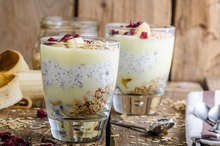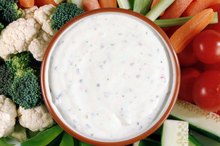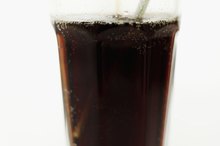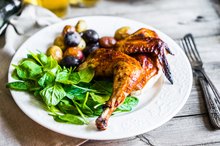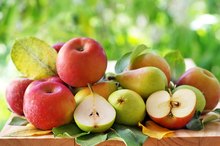What does fact checked mean?
At Healthfully, we strive to deliver objective content that is accurate and up-to-date. Our team periodically reviews articles in order to ensure content quality. The sources cited below consist of evidence from peer-reviewed journals, prominent medical organizations, academic associations, and government data.
- American Heart Association; Sugars and Carbohydrates; October 2010
- American Heart Association; Reading Food Nutrition Labels; September 2010
The information contained on this site is for informational purposes only, and should not be used as a substitute for the advice of a professional health care provider. Please check with the appropriate physician regarding health questions and concerns. Although we strive to deliver accurate and up-to-date information, no guarantee to that effect is made.
Daily Sugar Intake Based on a 1200 Calorie Diet
While recommendations vary slightly among health-centered organizations, one constant is the suggestion to reduce added sugars in your diet. Foods that contain added sugars provide additional calories without enhancing nutrition. Natural sugars, such as fructose in fruit and lactose in milk, are part of a food's nutritional package, explains the Dietary Guidelines for Americans 2010, but limiting sugar added to foods is key to managing overall calories 1.
Food Patterns
Food patterns established by the U.S. Department of Agriculture designate an appropriate number of servings from each food group, based on overall calorie target. The meal patterns allow for discretionary calories not accounted for in the food group recommendations. Discretionary calories can be spent on solid fats and added sugars, or SoFAS, says the USDA. In a 1,200-calorie diet, the total number of calories allotted for SoFAS is 121 calories, or roughly 10 percent of overall calories.
- Food patterns established by the U.S. Department of Agriculture designate an appropriate number of servings from each food group, based on overall calorie target.
Understanding SoFAS
Yogurt Granola Parfait Calories
Learn More
Because discretionary calories apply to solid fat and sugar, the total number of calories allowed from sugar varies according to your food choices. The USDA recommends choosing lean or low-fat cuts of meat and fat-free or low-fat dairy products, the calories from which are part of the general meal pattern guidelines and not included in the discretionary calorie allowance. When you choose higher fat protein options, the additional calories must come from your discretionary calories, thereby affecting the amount of added sugar allowed.
Simplifying Sugar Guidelines
In a 1,200-calorie diet, however, less is more appropriate. As a general guideline, the American Heart Association recommends limited added sugars in your diet to no more than 50 percent of discretionary calories 2. That amounts to around 60 calories from added sugar, or less than 4 tsp., in a 1,200-calorie diet.
Identifying Added Sugars
Nutrition Facts for Hidden Valley Ranch Dressing
Learn More
Although tracking sugar added to your coffee, cereal or other foods is fairly cut and dried, processed foods often contain added sugar, as well. Reading the nutrition label will help you identify how many grams of sugar a food provides; however, the label doesn't differentiate between natural and added sugar. Check the ingredient list for sugar by other names, such as:
- molasses
- honey
- liquid fructose
- high fructose corn syrup
- dextrose
- corn syrup solids
Related Articles
References
- U.S. Department of Health and Human Services: Dietary Guidelines for Americans 2010
- American Heart Association; Sugars and Carbohydrates; October 2010
- ChooseMyPlate.gov: What are Empty Calories?
- American Heart Association; Reading Food Nutrition Labels; September 2010
- Rippe JM, Angelopoulos TJ. Sucrose, High-Fructose Corn Syrup, and Fructose, Their Metabolism and Potential Health Effects: What Do We Really Know? Adv Nutr. 2013;4(2):236-245. doi:10.3945/an.112.002824
- U.S. Department of Agriculture. Cut Down on Added Sugars. 2016.
- Rampersaud GC, Kim H, Gao Z, House LA. Knowledge, perceptions, and behaviors of adults concerning nonalcoholic beverages suggest some lack of comprehension related to sugars. Nutr Res. 2014;34(2):134-142. doi:10.1016/j.nutres.2013.11.004
- Tandel KR. Sugar substitutes: Health controversy over perceived benefits. J Pharmacol Pharmacother. 2011;2(4):236-243. doi:10.4103/0976-500X.85936
- Bray GA. Energy and Fructose From Beverages Sweetened With Sugar or High-Fructose Corn Syrup Pose a Health Risk for Some People. Adv Nutr. 2013;4(2):220-225. doi:10.3945/an.112.002816
- American Dental Association. American Dental Association Encouraged by Soda Makers’ Pledge to Promote Smaller Sizes, Less Sugar. 2014.
- U.S. Department of Health and Human Services and U.S. Department of Agriculture. 2015–2020 Dietary Guidelines for Americans. 8th Edition. 2015.
Writer Bio
Pam Murphy is a writer specializing in fitness, childcare and business-related topics. She is a member of the National Association for Family Child Care and contributes to various websites. Murphy is a licensed childcare professional and holds a Bachelor of Arts in English from the University of West Georgia.
